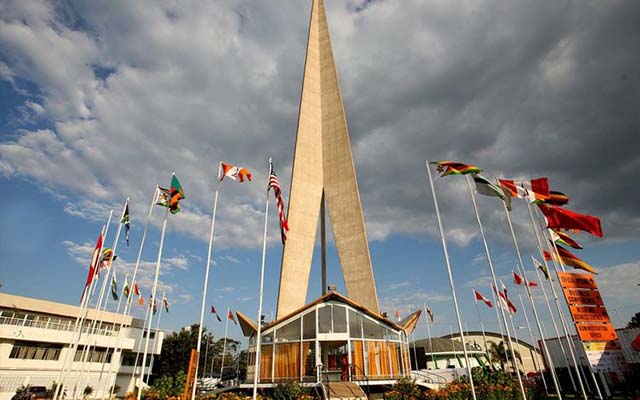‘Nampower deal gave Hwange capacity lift’

Golden Sibanda Senior Business Reporter
ZESA says the $40 million refurbishment of Hwange Power Station by Namibian Power utility, Nampower, breathed a new lease of life to a plant that was at the time as good as dead, particularly the station’s generators.
Spokesperson Fullard Gwasira made the remarks as Zesa last week provided an update on the power situation outlining ongoing interventions.
“When we did the refurbishments in 2011, we only repaired the generators, but not other auxiliary systems such as the turbines and milling plant and when the plant breaks down, it is failure of these things,” he said.
Mr Gwasira said such areas tend to break down when the station is run for long periods without rest, but the Nampower deal gave the plant a facelift.
“So the things we did not do with the Nampower deal are the things we have been doing with our own limited resources,” Mr Gwasira said.
He, however, bemoaned the $1 billion owed by customers across the country as an inhibiting factor to continuous investment in capacity rebuilding. But he said areas not repaired by Nampower were prone to failure.
The deal to refurbish Hwange was struck in 2007, when NamPower provided a $40 million loan facility to bankroll the refurbishment of Hwange Power Station, Zimbabwe’s largest coal-fired power plant, in return for 100MW during peak hours and 150MW of power off peak over five years.
Zesa is looking beyond Zimbabwe for respite to power deficits, but even this might not bring instant relief to black outs blighting the country amid caution such breakthrough could come at a high cost for the country.
The power utility admitted the choking power crisis will inflict indelible damage to the economy and may last until early next year. Constantly, industry and commerce are forced to close due to rolling power cuts.
Energy and Power Development Minister Dr Samuel Undenge has already revealed supply to major consumers of electricity such as Zimplats, Mimosa, Unkie and ZimAlloys would be cut by up to 25 percent.
But experts say power deficit of 8 to 9 percent can cause contraction in gross domestic product of 0,6 percent to 0,7 percent, which Zimbabwe ill affords given growth targets were revised to from 3,5 to 1,5 percent this year.
Zimbabwe is paying the price for not investing in new power generation infrastructure for over two decades now, the last such investment having been construction of the now over aged Hwange thermal station.
The 920 megawatt power station at inception has lost half its installed capacity while its current generation capacity is constantly not available.
Technical problems due to inadequate maintenance, part replacement and upgrading make the power plant prone to frequent production stops.
Zesa itself has conceded that due to years of lack or under investment in new generation capacity, all thermal have outlived their useful life.
“The fundamental reason for under investment in the sector has been the issue of achieving bankability, primarily with regards to electricity pricing, creditworthiness,” Zesa said on Friday in an update to the power situation.
The power utility said for power projects to be bankable, the tariff should be cost reflective, yet “in the case of Zimbabwe we have been found wanting on both fronts, however progress has been made in this regard.”
Notably, time and again the Zimbabwe Regulatory Authority has claimed that the reason why most independent producers have not come to the party was the cost of power projects, which it said tend to take time.
Nonetheless, short term measures to alleviate the power crisis are just as important as planning for the medium and long term to stem out the deficit. In light of the cost, Zimbabwe needs to run than walk to resolve the crisis.
The utility is engaging Southern African Power Power utilities and other Independent Power producers, but nothing material has come through yet.
“Discussions are taking place with some suppliers of emergency power to come into effect in January 2016. This power normally comes at a higher price, but we will continue to negotiate for a better deal,” Zesa said.
According to Zesa, demand at peak periods stands at between 1 600MW and 2 000MW, but is currently only able to produce below 1 000MW.
Output dropped from about 1 400MW due to water rationing by Zambezi River Authority for both Zesa and Zambian utility, ZESCO due to falling Kariba water levels after low inflows in the 2015/15 hydrological year.










Comments